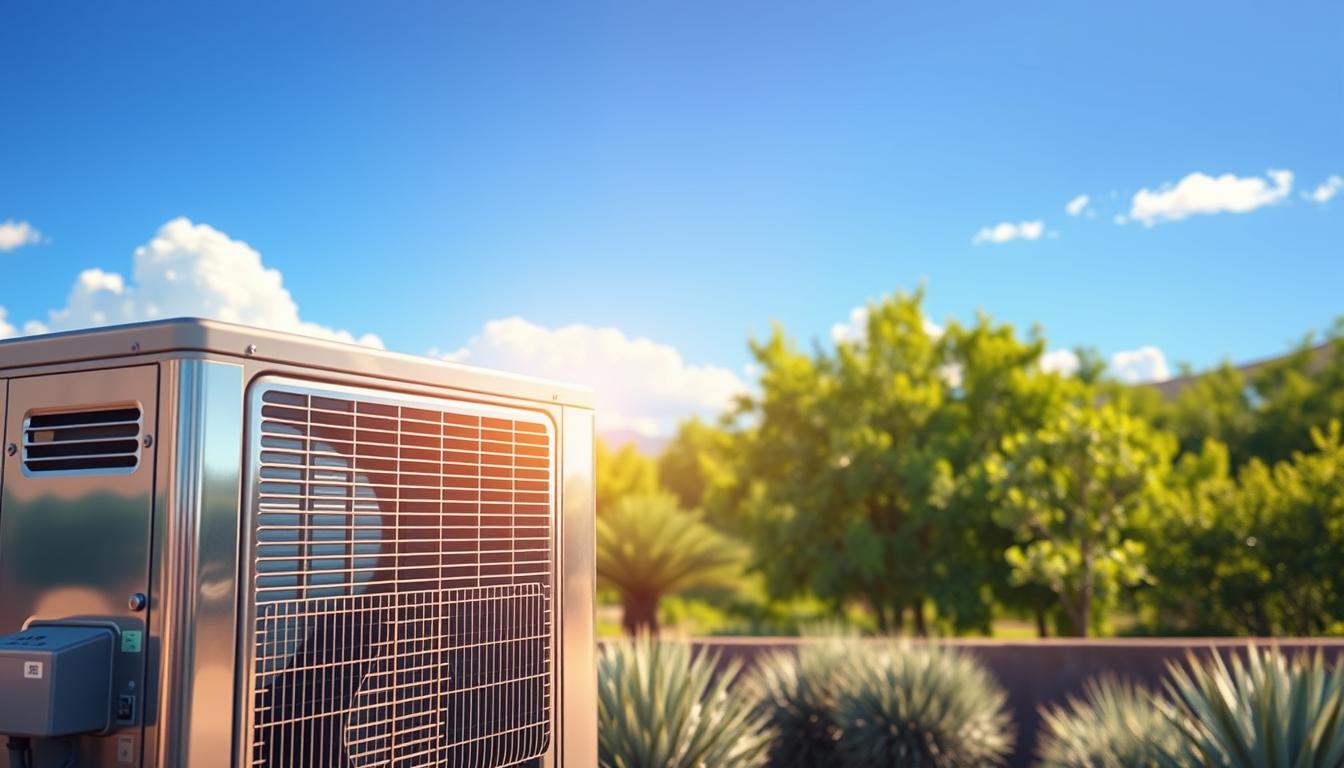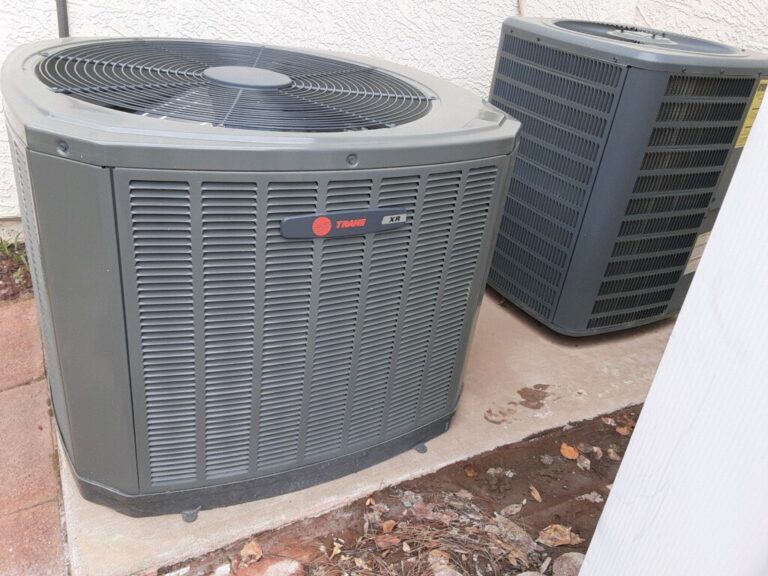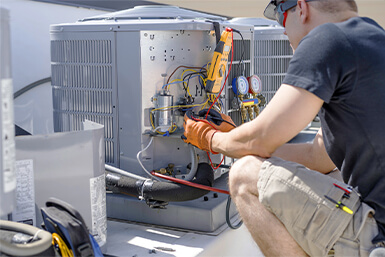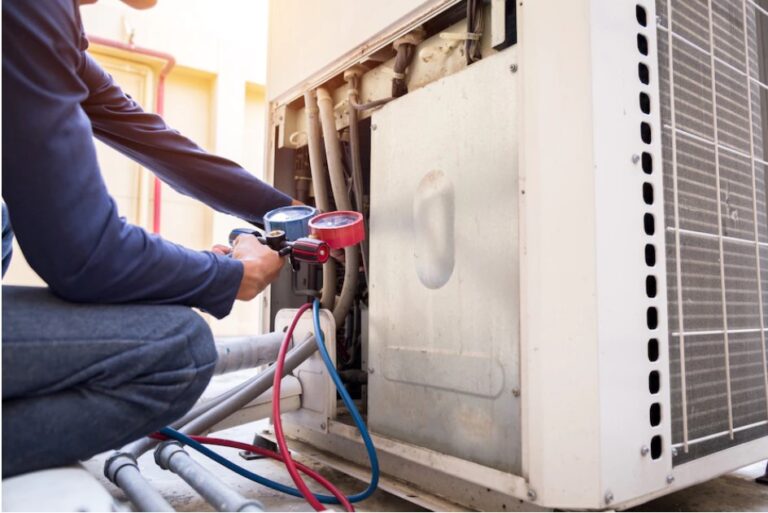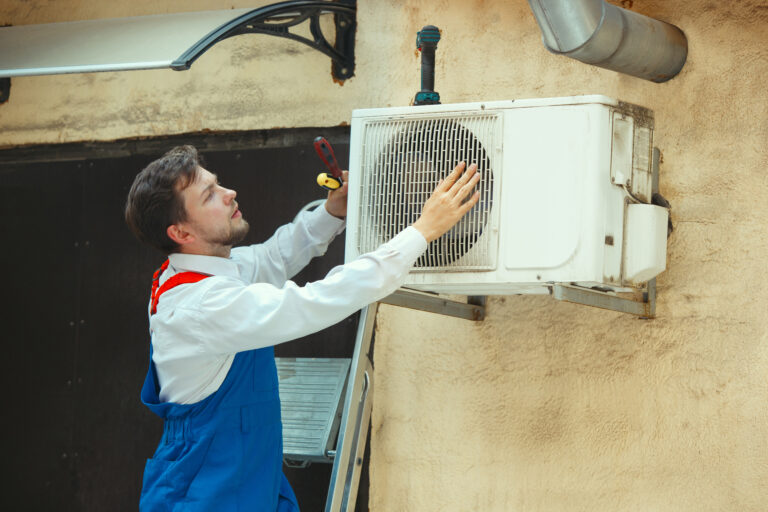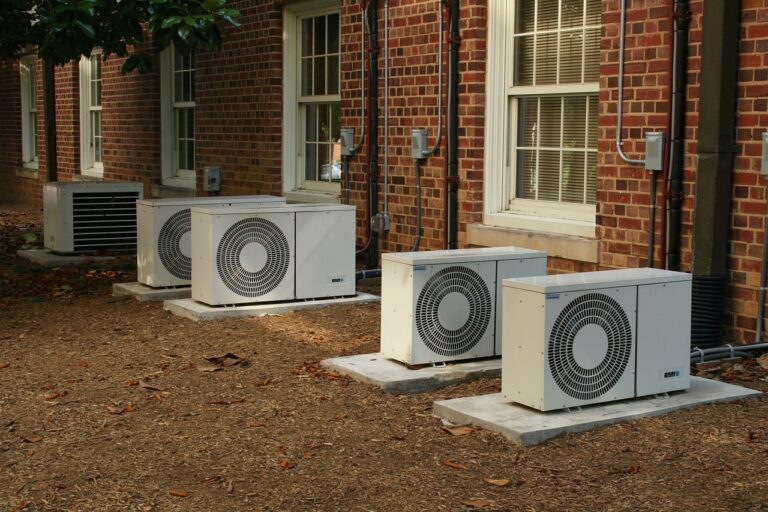10 AC Efficiency Tips to Beat the Arizona Summer Heat
Arizona’s scorching summer heat can be overwhelming, making it challenging to maintain a comfortable home temperature without breaking the bank on energy bills.
As the temperature soars, so does the demand on your air conditioning system, leading to increased energy consumption.
However, with the right strategies, you can keep your home cool and your energy costs in check. Proper maintenance and smart usage of your cooling system can significantly reduce energy consumption during the hottest months.
This article will explore 10 tailored efficiency tips to help Arizona homeowners stay comfortable while avoiding the shock of excessive summer energy bills.
Key Takeaways
- Learn how to maintain your air conditioning system for optimal performance.
- Discover smart usage practices to reduce energy consumption.
- Explore passive cooling techniques tailored for Arizona’s desert climate.
- Understand the importance of regular professional maintenance.
- Find out how smart technology can enhance your cooling system’s efficiency.
Why Arizona’s Extreme Heat Demands Smarter AC Strategies
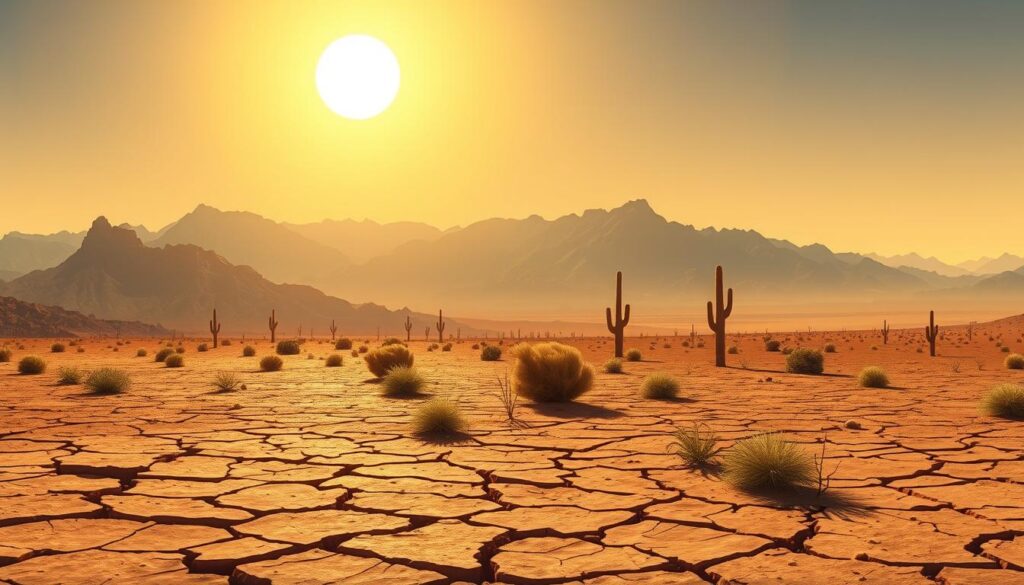
The extreme heat in Arizona demands more than just a standard air conditioning system; it requires smart strategies to maintain a comfortable home environment. Arizona’s desert climate is known for its intense heat, with temperatures often exceeding 110°F during the summer months.
The Unique Challenges of Desert Climate Cooling
Arizona’s extreme temperatures create unique challenges for residential cooling systems. The dry desert air affects AC performance differently than in humid climates. For instance, the lack of humidity means that air conditioners don’t have to work as hard to remove moisture from the air, but they still have to combat the intense heat.
- The intense direct sunlight in Arizona puts additional strain on cooling systems.
- Typical Arizona homes face specific cooling challenges due to architectural styles and building materials common in the region.
How Efficient AC Use Can Dramatically Cut Arizona Energy Bills
In Arizona, a significant portion of household energy consumption is dedicated to cooling. By implementing efficiency measures, homeowners can reduce their energy bills by 20-30% during peak summer months. For more information on saving money on air conditioning, visit ways to save money on air. This not only saves money but also has environmental benefits by reducing overall energy consumption.
By understanding the unique challenges of desert climate cooling and adopting efficient AC strategies, Arizona homeowners can stay cool while minimizing their energy bills.
Professional Maintenance: Your First Line of Defense
As Arizona’s temperatures soar, a well-maintained AC is your best defense against the heat. In such a harsh climate, your air conditioning system works tirelessly to keep your home cool. Thus, professional maintenance is not just a recommendation; it’s a necessity.
Scheduling Pre-Summer Professional AC Tune-Ups
To ensure your AC is ready for the summer heat, scheduling a pre-summer professional tune-up is crucial. This maintenance check should include a refrigerant level check, electrical component inspection, condenser cleaning, and system calibration. By doing so, you can identify potential issues before they lead to system failure during the hottest days. It’s advisable to schedule this maintenance in early spring to avoid peak season rates and ensure your system is ready before the first heat wave hits. For more tips on maintaining your AC during the summer, visit our guide on tips for keeping your AC in proper working.
Keeping Outdoor Units Clear of Desert Debris and Vegetation
Arizona’s desert environment poses unique challenges to outdoor condenser units, including dust, sand, and vegetation. To maintain efficiency, it’s essential to keep these units clear of debris. Ensure there is proper clearance around the units to maximize airflow. Regularly inspect the area and clear any debris or vegetation that may have accumulated. This simple maintenance task can significantly impact your air conditioning system’s performance and longevity.
By investing in professional maintenance, you not only improve your AC’s efficiency but also extend its lifespan. This proactive approach can lead to significant savings on your energy bills and reduce the need for costly repairs. Thus, making it a vital part of your summer preparation.
Essential AC Efficiency Tips for Summer Performance
To maximize your air conditioning system’s efficiency during the scorching Arizona summer, it’s crucial to focus on two key areas: air filters and vent maintenance. Proper care of these components can significantly impact your AC’s performance and energy consumption.
Tip 3: Clean or Replace Air Filters Every 30-60 Days
Arizona’s dusty environment can cause air filters to clog more quickly than in other regions. This necessitates more frequent changes to maintain optimal airflow and air quality. There are various types of air filters available, including fiberglass, pleated, and HEPA filters. For desert environments with high dust levels, pleated filters are often recommended due to their higher dust-holding capacity.
To ensure maximum airflow, it’s essential to check, clean, and replace filters properly. Here’s a step-by-step guide:
- Turn off your AC system before starting work on the filters.
- Remove the filter and inspect it for dust and debris.
- If the filter is reusable, vacuum and rinse it; otherwise, replace it with a new one.
- Make sure to handle the filters gently to avoid damaging them.
Dirty filters can reduce your AC system’s efficiency by up to 15%, significantly increasing energy consumption. For more detailed guidance on maintaining your AC system, you can refer to important steps for successful air conditioner.
Tip 4: Clean Vents and Ensure Proper Airflow Throughout Your Home
Cleaning your vents is just as important as maintaining your air filters. Dust and debris in the vents can prevent air from flowing freely, reducing the overall efficiency of your air conditioning system. To clean your vents, start by removing the vent covers and vacuuming out any dust or debris.
It’s also crucial to check for blockages in the ducts and ensure that the vents are not obstructed by furniture or other objects. Balancing airflow throughout your home by adjusting vents seasonally can also improve cooling efficiency. For instance, closing vents in unused rooms can help direct more cooled air to areas where it’s needed.
Furniture placement and room layout can significantly impact airflow and cooling efficiency. To optimize your home’s cooling, consider rearranging furniture to allow for unobstructed air circulation. Additionally, identifying and addressing common airflow problems like hot spots in certain rooms can further enhance your AC system’s performance.
Creating a Sealed and Insulated Environment
The extreme heat in Arizona demands a comprehensive approach to cooling, starting with a sealed and insulated home. A well-sealed and insulated environment is crucial for maintaining cool air inside the house and reducing the workload on the air conditioner.
Tip 5: Seal All Cracks and Gaps in Windows, Doors, and Ductwork
Arizona’s extreme temperature differential between indoor and outdoor air creates strong pressure that forces cool air out through even tiny gaps. To identify these leaks, homeowners can conduct a DIY home energy audit using methods like the incense test or infrared thermometer scanning.
Sealing different types of leaks requires specific techniques: weatherstripping for doors, caulking for windows, and professional sealing for ductwork. Leaky ducts in unconditioned spaces like attics can waste up to 30% of cooling energy in Arizona homes.
By sealing all cracks and gaps, homeowners can prevent cool air from escaping, thus reducing the strain on their air conditioning units and lowering energy bills.
Tip 6: Upgrade Insulation in Attics and Walls to Block Arizona Heat
In desert climates, attic insulation is critical as roof temperatures can exceed 150°F. Proper insulation creates a thermal barrier that keeps heat out during the day and retains cool air at night.
There are various insulation options available, including fiberglass, cellulose, and spray foam, each with its effectiveness in Arizona’s climate. Upgrading insulation in attics and walls is a significant step towards minimizing heat gain and reducing the need for excessive air conditioning.
These improvements not only enhance comfort but also typically pay for themselves within 1-2 cooling seasons through reduced energy bills.
Smart Temperature Management Strategies
In the face of Arizona’s extreme heat, employing smart temperature management strategies can make a significant difference in home comfort and energy expenditure. By leveraging advanced thermostat technologies and optimizing temperature settings, homeowners can enjoy a cooler living space while reducing their energy bills.
Tip 7: Install and Program a Smart Thermostat for Desert Climate
Installing a smart thermostat is a crucial step in managing your home’s temperature effectively. For desert climates like Arizona, a smart thermostat can be specifically programmed to handle the extreme temperature fluctuations throughout the day. When selecting a smart thermostat, look for features such as learning capabilities, humidity sensors, and remote access. These features allow the thermostat to adapt to your schedule and preferences, ensuring optimal comfort and energy efficiency.
A smart thermostat can be programmed to pre-cool your home in the early morning, raise the temperature during the peak heat hours, and gradually adjust it in the evening to maintain a comfortable temperature. The “recovery” feature helps in efficiently transitioning between temperature settings without overworking the AC system.
Tip 8: Optimize Temperature Settings for Occupied and Unoccupied Hours
Optimizing temperature settings based on whether your home is occupied or not can lead to significant energy savings. The U.S. Department of Energy recommends setting your thermostat to 78°F when you’re home and raising it several degrees warmer when you’re away. For occupied daytime hours, maintaining a temperature of 78°F is ideal. During sleeping hours, you can adjust it to 80-82°F, and when the house is empty, setting it to 85°F can help in saving energy.
Temperature zoning is another effective strategy, particularly in multi-level Arizona homes where heat tends to rise. By controlling the temperature in different zones of your home, you can achieve more efficient cooling and enhanced comfort. According to the data, proper thermostat programming can lead to average energy savings of 10-15% in desert climates. Moreover, smart thermostats can integrate with time-of-use utility plans common in Arizona, maximizing savings during peak rate periods. For more information on optimal AC temperature settings, you can visit Mastering Summer Comfort or The Ideal Thermostat Temperature.
Maximizing Comfort While Minimizing AC Dependency
Staying cool in Arizona doesn’t have to mean maxing out your air conditioning bill; there are several ways to stay comfortable while minimizing AC use. By implementing a combination of smart strategies, homeowners can enjoy a cooler living space without breaking the bank.
Strategic Use of Ceiling Fans and Air Circulation
Ceiling fans are a simple yet effective way to enhance comfort while reducing reliance on air conditioning. By creating a wind-chill effect, ceiling fans can make rooms feel 4-6 degrees cooler without actually lowering the temperature. To maximize their effectiveness, ensure that your ceiling fans are rotating counterclockwise during the summer to create a cooling downdraft.
Strategic fan placement is also crucial for creating cooling cross-breezes and improving air circulation throughout your home. Place fans in windows or doorways to draw in cooler air and circulate it throughout the house. It’s essential to use fans in conjunction with AC rather than as a replacement during extreme heat.
Implement Passive Cooling Techniques for Arizona Homes
Effective window treatment strategies can significantly reduce heat gain in Arizona homes. Consider using solar screens, reflective blinds, or window films to temper the intense sunlight. These solutions can help keep your home cooler by blocking direct sun rays.
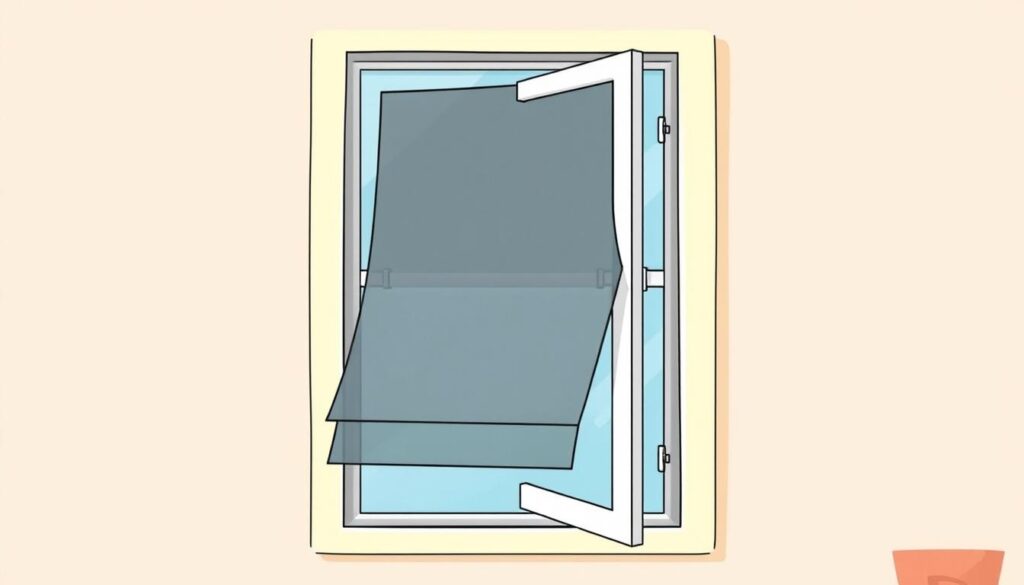
Additionally, implementing passive cooling techniques such as strategic landscaping can make a significant difference. Planting shade trees on the south and west sides of your home can provide natural cooling by blocking direct sunlight. Using light-colored, reflective roofing materials can also reduce heat absorption in desert climates.
To ensure all cooling systems remain at peak efficiency throughout Arizona’s extended summer season, perform regular maintenance. This includes checking and replacing air filters, inspecting ductwork for leaks, and scheduling professional AC tune-ups.

